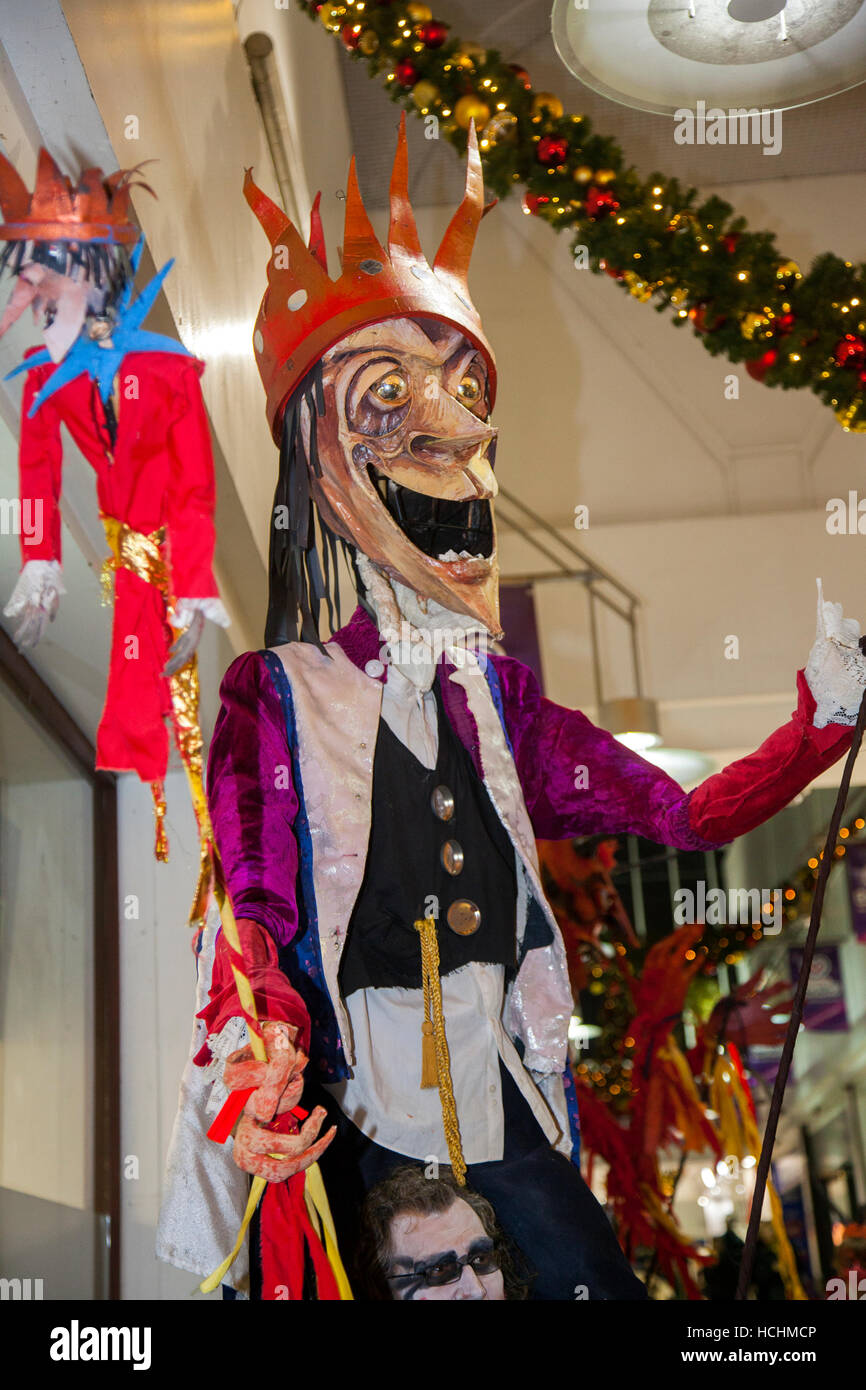Chester, UK 8th December, 2016. Papier mache, or paper mache, characters, faces and figures at Mid-Winter Watch Parade, Chester’s 15th-century tradition of ‘Setting the Watch’. Karamba Samba a ‘ghost band’ led a fun parade of skeletons, angels and devils as they celebrated the Winter solstice. This event with dancers, fire breathing and sword fights, dates from the 1400’s, where the city leaders would hand over the keys of Chester to the City Watch.

Image details
Contributor:
MediaWorldImages / Alamy Stock PhotoImage ID:
HCHMCPFile size:
24.7 MB (1.2 MB Compressed download)Releases:
Model - no | Property - noDo I need a release?Dimensions:
2400 x 3600 px | 20.3 x 30.5 cm | 8 x 12 inches | 300dpiDate taken:
8 December 2016Location:
Chester, Cheshire, UKMore information:
This image could have imperfections as it’s either historical or reportage.
A monk, Lucian, wrote of a Chester procession of clerics in the year 1195 and city annals mention a parade in 1397/8, but it was not until the mayoralty of Richard Goodman who served from November 1498 until November 1499 that the "Wach on Midsummer Eve was first sett out and begonne". At every summer solstice, Cestrians would march through the streets carrying torches and wearing costumes during years when the famous Chester Mystery Plays were not performed. (A similar practise was performed every midwinter - the Christmas Eve Watch was a candlelit procession which would go from the mayor's house to the Common Hall where the keys to the city gates would be given to the mayor who, in turn, entrusted them to the watchmen who would keep the city safe over the festive season.) In 1564 the midsummer watch parade included: 4 gyants, 1 unikorne, 1 dromodarye, 1 luce, 1 camell, 1 dragon, 6 hobbyhorses and 16 naked boys. Putting the procession together was profitable for some and fun for others. An annual account includes: Buckram for the giants Hood 4s; Fine buckram for the giant's whiskers 10s 10d; Michael Linch for cutting the garnish whiskers and all the roses used in the work 10s; John Banion 15 days work at 1s, 15s; John Wright, 35 days chiding and brawling and hindering the workmen from their work, and allsoe for fuddleing and drinkeing with several ather leters and molestationers, just notrhing and wortily he declare it, 0s 0d. Despite the cancellation of the mystery plays in 1575, (although they were performed again in 1578) and the banning of the midsummer parade in 1600 by the Protestant mayor, Henry Hardware, the tradition was revived by the next mayor Robert Brerewood, but without the devil in feathers and the naked boys. The parade continued for every year until the last quarter of the 17th century. The last Midsummer show was recorded in 1670, it was then moved to Whit Tuesday until 1678 and not revived until 1995.